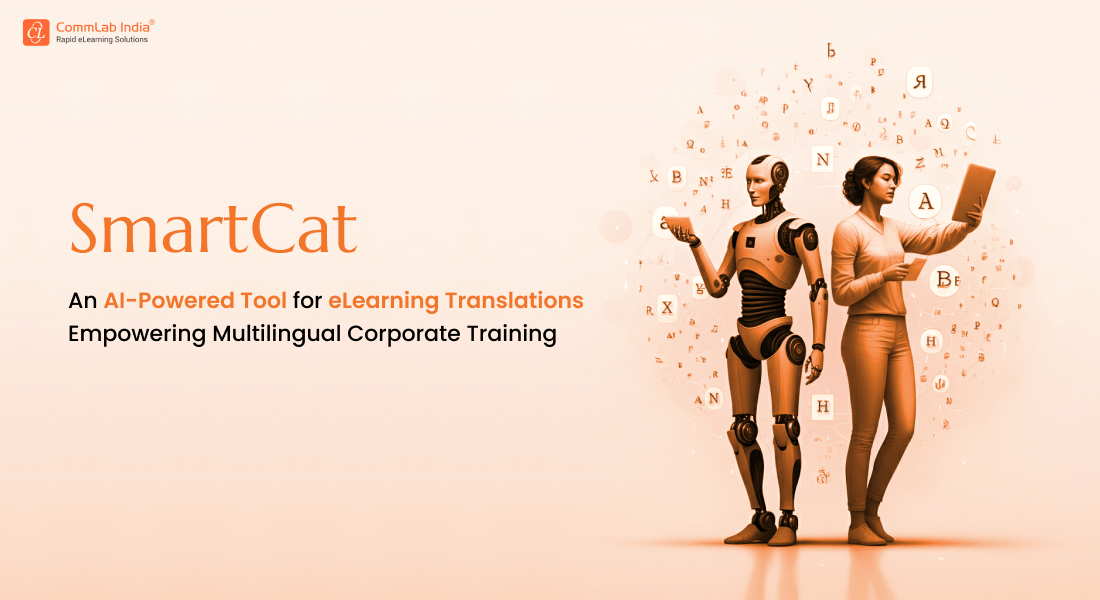5 Key Features of AI-Based eLearning Translations [Infographic]
![5 Key Features of AI-Based eLearning Translations [Infographic] 5 Key Features of AI-Based eLearning Translations [Infographic]](https://blog.commlabindia.com/hubfs/blogs/key-features-ai-based-elearning-translations-inf.jpg)
Have you ever wished for a world where knowledge transcends language barriers? Where anyone, anywhere, can access high-quality training content in their native tongue? Well, eLearning translations have been helping us with that for a long time now. However, with generative AI you can explore an advanced side to eLearning translations. You can break down the linguistic walls to foster a more inclusive learning environment for your global workforce at a much faster pace. Moreover, the high quality and efficiency of the training courses stays intact.
Now you’re probably wondering how this all exactly works. It’s simple and complicated at the same time. But don’t worry! This blog will first walk you through the different use cases of AI in eLearning design and development and then help you understand why you should consider using AI for eLearning translations along with covering the 5 key features of generative AI-based eLearning translations.
Are you ready? Let’s begin!
Use Cases of AI in eLearning Design and Development
- Generate content
- Draft learning objectives
- Write video scripts
- Create eLearning assessments
- Review content
These are a few of the many areas where you can leverage AI tools to maximize efficiency and productivity. Our next section particularly focuses on reasons why you should use generative AI for eLearning translations.
→ Download Now: Leveraging AI for Impactful eLearning Translations!
Why Use Generative AI for eLearning Translations?
Here are the top 3 reasons that put forward a strong case for using generative AI for eLearning translations:
- Ensures Speed and Efficiency: In contrast to human translators, AI can translate vast amounts of content in a fraction of the time. This allows you to reach a global audience quickly, thereby helping you boost productivity and maximize training ROI.
- Enables Cost-Effectiveness: Compared to human translation, AI is significantly pocket-friendly. It frees up your resources for other aspects of your eLearning program.
- Promotes Accessibility: Finding a translator for a not-so-popular language can be a daunting task. And if you’re lucky to find a translator, it can be pretty heavy on the pocket. Whereas AI can translate content into a wider range of languages, including lesser-known ones. This allows you to facilitate learning for employees whose native language is not so mainstream and that too in a cost-effective manner.
5 Key Features of Generative AI-Based eLearning Translations
To Sum It Up!
Generative AI-based eLearning translations present a compelling opportunity for organizations to expand the reach and impact of their eLearning programs. It's a win-win situation for both employees and organizations as the employees get to learn in their native tongue which boosts comfort and understanding, and organizations benefit in terms of productivity, efficiency, and innovation. So what are you waiting for? Make the most of AI-based eLearning translations and reach your global workforce to foster an inclusive and effective learning experience. If you wish to explore more about how generative AI can benefit your eLearning translations venture, then we’ve curated just the right eBook for you. Check it out below!







![5 Secrets to Quick, Easy and Cost-effective eLearning Translations [Infographic]](https://blog.commlabindia.com/hubfs/Imported_Blog_Media/elearning-translations-quick-ways-info.jpg)